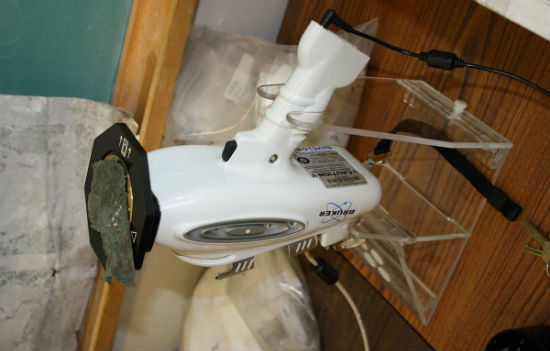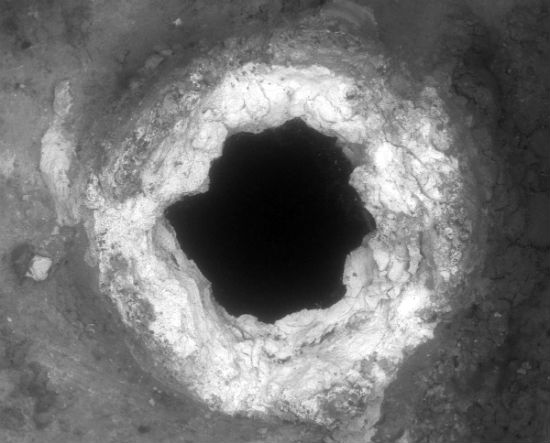Crawford Farm Lead
Main Content
 Interdepartmental collaboration: The Crawford Farm site (11Ri81) represents the ca. 1780-1815 location of the historic Sac village of Saukenauk in northwestern Illinois.
Interdepartmental collaboration: The Crawford Farm site (11Ri81) represents the ca. 1780-1815 location of the historic Sac village of Saukenauk in northwestern Illinois.
The University of Illinois field school recovered a large artifact collection from the site in the 1950s and early 1960s prior to its destruction by a highway construction project in 1963. Reanalysis of the Crawford Farm artifact collection in 2014-2015 by Southern Illinois University (SIU) archaeologists identified a perforated rectangular copper kettle scrap interpreted as representing a possible copper sieve for lead shot production.
 To our knowledge, this artifact type has not been previously identified, leading us to use portable X-ray fluorescence (PXRF) and scanning electron microscopy (SEM) to confirm our observations. Interpretation is that melted lead in the kettle would drop through the holes into a bucket of water to form lead shot.
To our knowledge, this artifact type has not been previously identified, leading us to use portable X-ray fluorescence (PXRF) and scanning electron microscopy (SEM) to confirm our observations. Interpretation is that melted lead in the kettle would drop through the holes into a bucket of water to form lead shot.
The results of this study, although limited, point out the usefulness of recent methodological advances such as PXRF in historic artifact analysis and identification.
To read the full report, click here (PDF).

